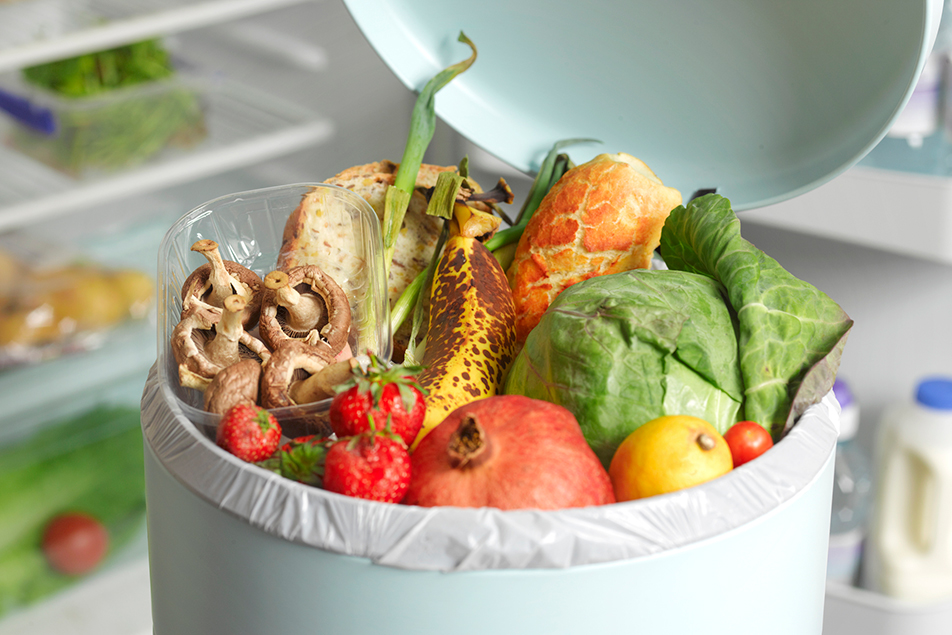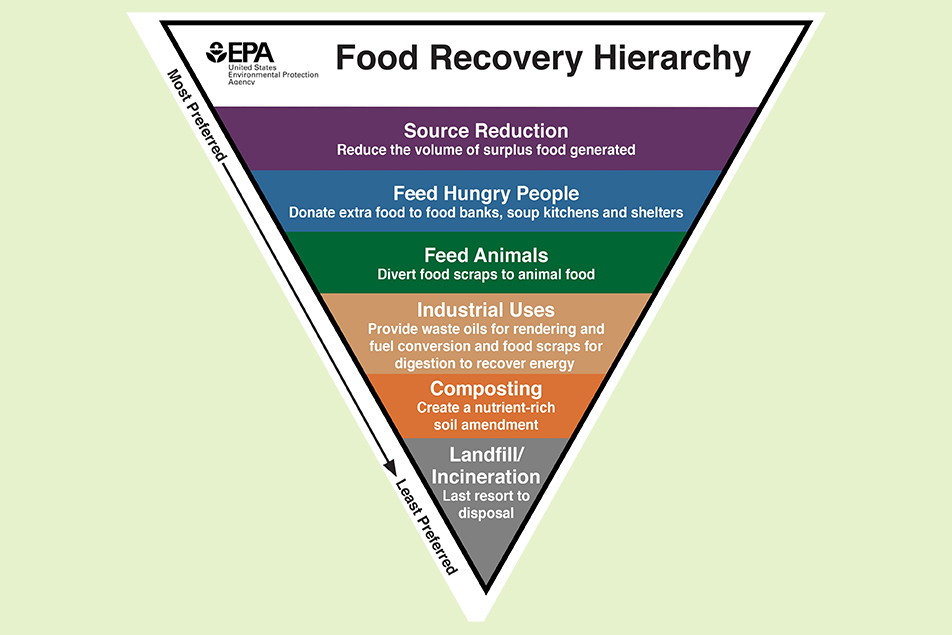
This post was written by Rachel Stohlman, RDN, LD, community outreach dietitian, Parkview Community Greenhouse and Learning Kitchen.
The theme for Earth Day this year is “Invest in our planet.” While there are countless ways to pursue this objective, food waste is one of the best areas to start tackling today.
Food loss or waste is defined as “the edible amount of food, postharvest, that is available for human consumption but is not consumed for any reason.” This might be cooking loss, such as the natural shrinking and moisture loss that comes with the cooking process. It could be food waste from non-edible parts of food, such as eggshells and banana peels.
In total, it’s estimated that 30-40% of the food supply is wasted; over 133 billion pounds of material and a whopping $161 billion worth of food! This doesn’t even take into account the energy wasted in the transportation from farm to fork and the unnecessary removal of waste. It really adds up!
We see waste throughout the process from farm to retail to fork. On the farm, we see waste in the production and harvesting process, as well as storage and transportation. In the stores, there is high demand for refrigeration and the spoiling that accompanies overordering. And of course in our homes we see waste from a lack of meal planning, overordering and improper storage. There is truly opportunity every step along the way to reduce food loss.

When we think about our priorities for reducing waste, the top of the chart is the most preferred recovery, and that’s source reduction. This saves money by buying only what is needed and reduces labor costs. As we work our way down the graph, you can see that landfills should really be a last resort for disposal.
How can you reduce your food waste?
If you want to commit to reducing your food waste, you can start by pursuing zero-waste cooking, increasing food longevity and looking at labels.
Zero-waste cooking goes back to that old saying we learned years ago … reduce, reuse and recycle. Use less, go without ingredients or cook smaller portions. Know what you have on hand before you go shopping and only buy what you need. Limit impulse buys and work off of a list. Have a plan for the food you bring home and purchase items you can use in multiple dishes. Reuse and repurpose food scraps. Use leftovers in other dishes, like egg scrambles or hashes, power bowls or soups. When all else fails, make a stock! And recycle by composting foods as a last resort. Scraps don’t have to go in the trash when they can go back into the earth.
Food longevity speaks mainly to the way you optimize storage. This means maintaining proper cooling and freezing temperatures in your fridge and freezer. It also includes prepping produce right before consumption so that it can last longer, especially when you’re washing berries.
Here are some other quick tips for food longevity:
- Apples, pears and peaches emit ethylene, which can cause other produce items to ripen faster, so keep that in mind when storing.
- Most humid drawer should contain greens, lettuce, celery, carrots, green beans, broccoli and cauliflower.
- Least humid drawer should contain apples, pears and grapes.
- Don’t refrigerate tomatoes, onions, squash or potatoes.
- Use freezing to extend the life of foods. Blanch fresh produce if you aren’t going to use it right away. To blanch, simply boil in hot water for 1 minute, rinse in cold water, allow it to air dry, place in freezer bags, remove excess air and freeze.
When reading labels, there are three dates to pay attention to:
- Use by – The last date recommended for use of the product at peak quality. If a product has a use by date, follow it.
- Best by – Recommended date for the best flavor or quality.
- Sell by – The last date they should sell that specific package.
Be cognizant of your consumer and cooking practices is a great way to start investing in our planet. Small changes can have a big impact.



